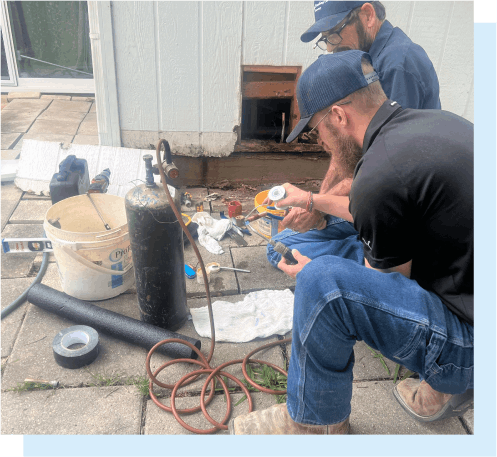A SAWS CSI (Cross Connection and Backflow Prevention) inspection is an essential part of maintaining a safe and functional plumbing system. This inspection ensures that non-potable water does not contaminate the drinking water supply, keeping you and your family safe from potential health hazards. Understanding the importance of this inspection can help you prepare and ensure everything runs smoothly.
During the inspection, various components of your plumbing system will be checked for compliance with safety standards. This includes backflow prevention devices, which are crucial in preventing contaminated water from entering your clean water supply. The inspection guarantees that your plumbing aligns with all local regulations, providing peace of mind and protecting public health.
Knowing what to expect during a SAWS CSI inspection can make the process less daunting. By familiarizing yourself with the key components and steps involved, you can be better prepared and ensure your home is ready for the inspection. This guide will walk you through the purpose and importance of the inspection, what gets checked, the steps involved, and how best to prepare your home.
Purpose and Importance of a SAWS CSI Inspection
The main goal of a SAWS CSI (Cross Connection and Backflow Prevention) inspection is to safeguard public health by ensuring that non-potable water does not pollute the potable water supply. This inspection checks for cross connections, which are any actual or potential connections between the safe, drinkable water supply and any other source that could contaminate it. Backflow prevention devices are critical in ensuring this separation is maintained.
Cross connections can happen anywhere in a plumbing system where the clean water and contaminated water might mix. This could happen through garden hoses, sprinkler systems, or even washing machines. If there is a drop in water pressure, such as during a fire hydrant use or a broken main, the dirty water could flow backward into the clean supply, causing contamination. By conducting regular CSI inspections, you help ensure these risks are minimized.
The importance of these inspections extends beyond individual homes; they are vital for the whole community. Contaminated water can lead to serious health issues, including gastrointestinal illness and other waterborne diseases. Regular SAWS CSI inspections help prevent such incidents, making them a critical part of public safety and health protocols. These inspections ensure compliance with local laws and regulations, keeping your plumbing system and drinking water safe and reliable.
Key Components Checked During the Inspection
During a SAWS CSI inspection, several critical components of your plumbing system are thoroughly examined. These components are checked to ensure they are working correctly and comply with safety regulations.
1. Backflow Prevention Devices: These are perhaps the most crucial elements checked during the inspection. Devices like double check valves, reduced pressure zone devices, and air gaps are examined to ensure they are functioning properly and providing adequate protection against backflow.
2. Cross Connections: Inspectors look for any possible points where the clean water supply could potentially mix with non-potable water. This includes checking areas like hose bibs, irrigation systems, water softeners, and even boiler connections.
3. Pressure Levels: The inspectors measure water pressure levels to ensure they are within the safe range. High pressure can damage plumbing fixtures, while low pressure can indicate potential issues like leaks or blockages in the system.
4. Hardware Condition: The general condition of your plumbing hardware, including pipes, valves, and fittings, is also checked. Any signs of wear, corrosion, or damage are noted and recommendations for repair or replacement are made.
By understanding and maintaining these key components, you can help ensure your plumbing system is safe and functional. Regular inspection and maintenance of these parts can prevent serious issues and keep your water supply clean and free from contaminants. This proactive approach not only protects your health but also saves you from costly repairs down the line.
Steps Involved in the Inspection Process
The SAWS CSI inspection process follows a series of steps to ensure your plumbing system is safe and compliant. Understanding these steps can help you prepare and know what to expect during the inspection.
1. Initial Contact and Scheduling: The process begins when you contact a certified inspector to schedule your SAWS CSI inspection. It’s important to choose someone with experience and knowledge about local regulations.
2. Pre-Inspection Check: Before the actual inspection begins, the inspector may conduct a preliminary check to identify any obvious issues. This helps in streamlining the inspection process.
3. Detailed Inspection: The inspector will then carry out a detailed check of your plumbing system. They will inspect backflow prevention devices, cross connections, pressure levels, and the condition of various hardware components.
4. Testing Components: During the inspection, the inspector may perform tests on certain devices like backflow preventers to ensure they are functioning correctly. This could involve pressure tests and examining the operation of valves and controls.
5. Documentation and Reporting: After completing the inspection, the inspector will document their findings and provide you with a detailed report. This report will outline any issues found and recommend necessary repairs or adjustments.
6. Follow-Up Actions: If any issues are identified, the inspector will discuss the next steps with you. This might include scheduling repairs or replacements of faulty components.
By following these steps, you can ensure that your plumbing system is up to code and that your water supply remains safe and uncontaminated.
Preparing Your Home for a SAWS CSI Inspection
Proper preparation can make the SAWS CSI inspection smoother and more efficient. Here are some tips to help you get ready:
1. Clear Access to Plumbing Areas: Ensure that the inspector has easy access to all plumbing areas, including water meters, valves, and backflow prevention devices. Clear away any obstructions that might hinder the inspection process.
2. Know Your System Layout: Familiarize yourself with the layout of your plumbing system. Know where key components like shut-off valves, water heaters, and backflow preventers are located. This can help you provide accurate information to the inspector.
3. Check for Visible Issues: Conduct a preliminary check of your plumbing system. Look for any visible signs of damage or leaks that might need fixing before the inspection. Addressing minor issues beforehand can save time during the actual inspection.
4. Gather Relevant Documents: Have any previous inspection reports, maintenance records, or repair logs ready. This information can be valuable to the inspector and provide context for the current inspection.
5. Coordinate with Your Plumber: If you’ve recently had plumbing work done, inform your plumber about the upcoming inspection. They might need to be present to answer any technical questions or address concerns raised by the inspector.
Taking these steps can help ensure that the inspection process goes smoothly and efficiently, minimizing any disruptions and ensuring that your plumbing system is thoroughly checked and up to standard.
Conclusion
SAWS CSI inspections are vital for maintaining the safety and integrity of your home’s plumbing system. By understanding what to expect and preparing accordingly, you can ensure a smooth and effective inspection. From checking critical components to following step-by-step procedures, these inspections play a crucial role in safeguarding your water supply from contamination.
Proper preparation not only eases the inspection process but also helps in promptly addressing any issues that may arise. Ensuring clear access to plumbing components, being familiar with your system, and having relevant documents ready can all contribute to a seamless experience.
Don’t wait for a plumbing issue to arise. Protect your home and health by scheduling a SAWS CSI inspection. Contact George Plumbing Co., Inc. today to ensure your water supply remains safe and your plumbing system functions optimally. Let our plumbing company in Texas handle your inspection and plumbing needs with professionalism and care.




